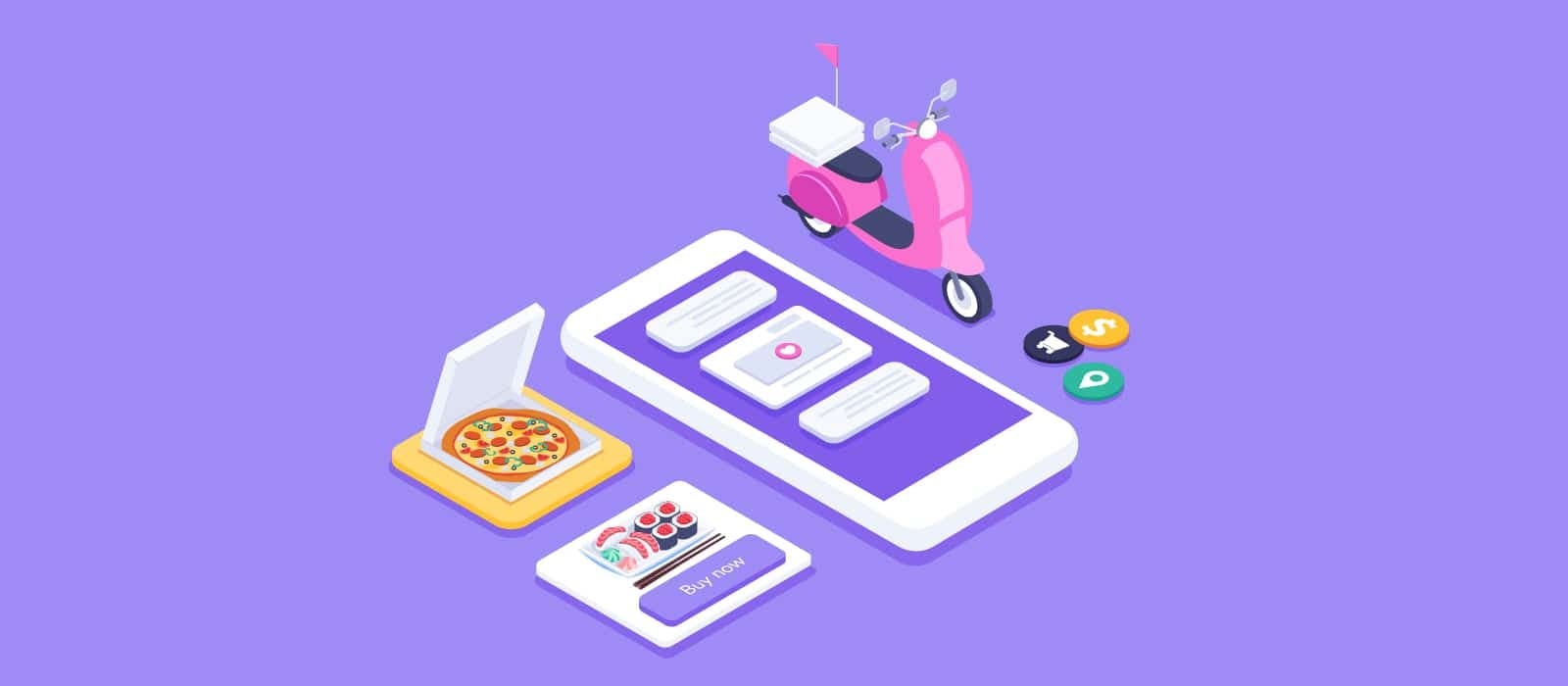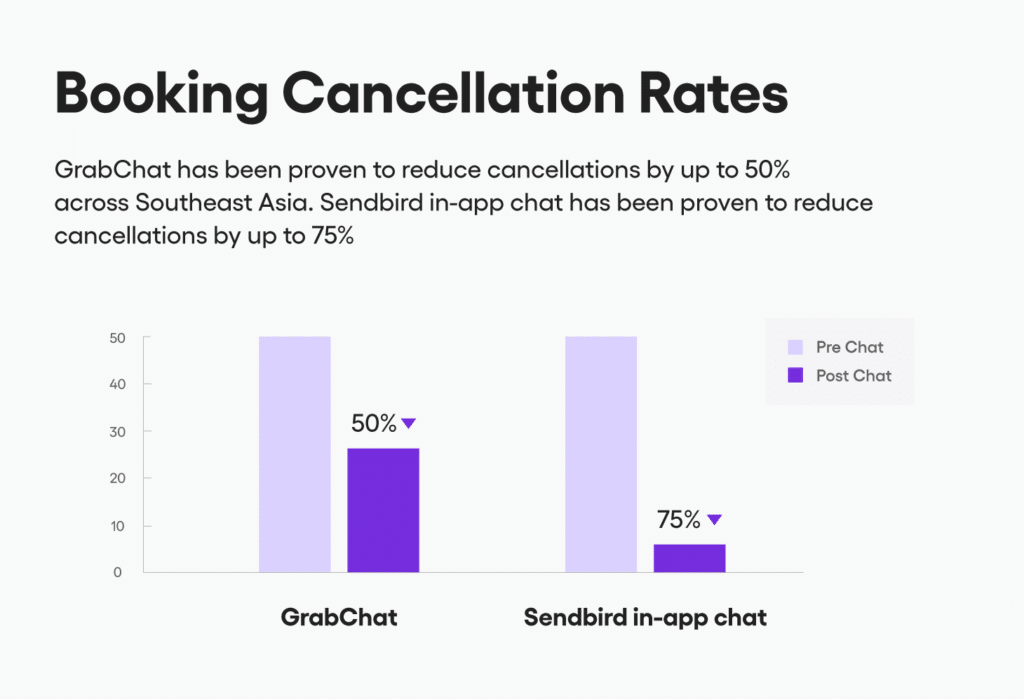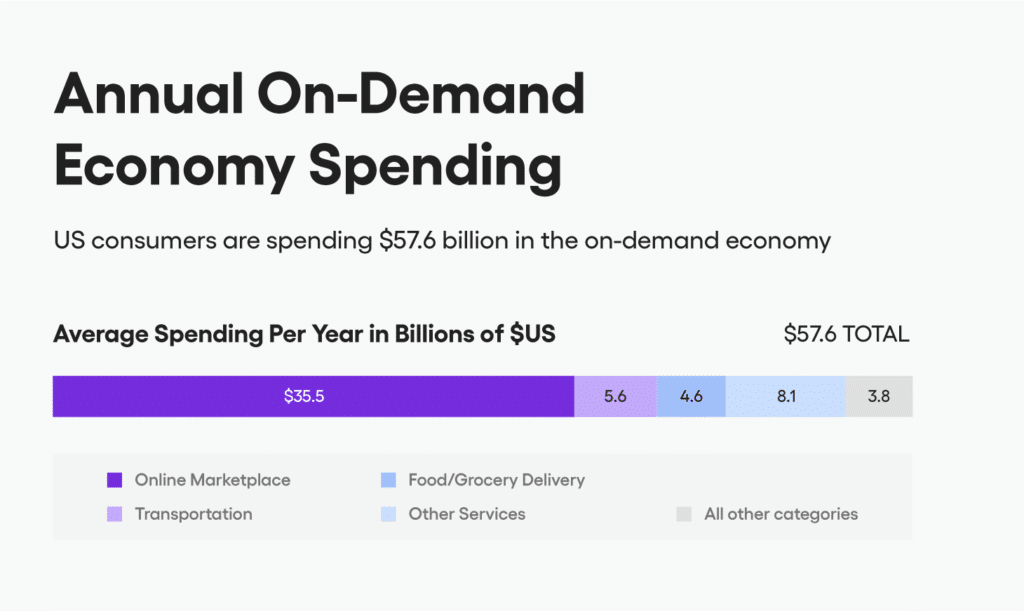Small moments can shape the delivery experience

Delivery serves an important purpose. It not only saves people the time and effort it would take to collect items themselves, but in times of crisis, it can also make essential items more accessible to vulnerable people who are unable to leave their homes.
At a time where people are isolated and alone, small human moments of connection can make a big difference in terms of user experience and create lasting positive brand associations.
However, a bad delivery experience can lead to consumer frustration, customer complaints, bad online reviews, and customer churn.
Insufficient communication is one of the main culprits responsible for negative delivery experiences, and many of the other things that go wrong with delivery – getting orders wrong, taking too long, not knowing the status of your order – can be mitigated by increased communication between the customer and delivery person and the customer.
Every so often, the delivery process goes off perfectly. There are no order mistakes, and no delays or technical issues. The delivery person locates the dropoff location with ease, an automated alert informs you that they’re approaching, and you step outside just as they pull up and hand you your parcel. Satisfied, you thank them and head inside to give them a five-star rating.
Unfortunately, as most of us know, this scenario is quite rare: The delivery process isn’t always this smooth. When the process does run smoothly, there’s typically very little need for communication between the customer and the delivery person. However, when things go wrong, being able to contact them can be the deciding factor between a negative or salvaged customer experience.
The delivery process is made up of a series of moments, each of which is a juncture where things can go right or wrong. Each of these moments – even the ones that happen “behind the scenes” — forms part of the buyer journey, and as such, each moment contributes to shaping the overall delivery experience.

Your order is on its way
Ensure it gets there with Sendbird.
Questions to improve the delivery experience
For delivery apps seeking to differentiate themselves in an increasingly crowded marketplace, there are a number of questions they should be asking themselves:
- How can we grow our user base and sustain this growth?
- How long does it take users to register after downloading the app?
- How long does it take for registered users to place their first order?
- How frequently and after how long do users delete the app?
- What are users’ key pain points that lead to complaints and/or churn? How can we ameliorate these?
- What are our delivery partners’ main pain points? How can we improve?
- How does our delivery experience compare to that of our competitors, and what are they doing differently?
- Are we using the right metrics to measure our success (or lack thereof?)
- Are we getting the personalization balance right?
Delivery apps that wish to stand out from the crowd need to provide a customer experience that truly differentiates their offering from their competitors. Whether your app is a family restaurant, a concierge marketplace, or a personal shopping service, you need to pay attention to your user experience as a whole, paying attention to the entire customer journey – not only your core value proposition. No matter how good your product or service is, if your customers are frequently frustrated by the ordering and delivery process, they won’t hang around for long.
KPIs such as average launch time, crash rate, abandoned cart rate, and more can shed light on potential pain points like slow loading, app malfunctioning, or generally frustrating user experience. When making improvements to your delivery app, it’s critical that you establish benchmarks that you can measure your app’s performance against after effecting changes.
Fundamentals of the delivery experience
The delivery process may have slight variations from vendor to vendor, but there are some fundamentals that are almost universal and have certainly become the expected norm. Let’s take a look at some of these:

Hallmarks of a successful delivery app:
A user-friendly interface
The app is easy to use and the user experience is intuitive and frictionless, even for first-time users.
Satisfactory app performance
The app functions without crashing, slowing down, or otherwise malfunctioning.
Seamless checkout and multiple payment options
Consumers expect a smooth checkout process and are accustomed to being able to choose from a variety of payment methods. Discount coupon codes should also apply without glitches.
Order tracking
Customers expect regular delivery updates to inform them of the status of their order, and many prefer being able to track the location of the delivery driver on a map in real-time.
Customer alerts
In-app messaging and push notifications serve to notify customers of order status changes, and also serve as an effective way to bring their attention to promotions or make personalized recommendations.
Communication tools
It’s important to facilitate communication between the delivery professional and the customer to ensure a seamless delivery experience. Ideally, the driver and customer should be able to chat in real-time or make in-app voice calls as the situation demands.
Customer support
Support interactions should be painless and make the customer feel heard. A customer-centric refund/returns policy also does much for customer retention by making customers feel valued and respected.
Ratings and feedback
Being able to rate orders and delivery is an important part of the process – both for customer relationship management and as a data-gathering mechanism that allows you to continuously improve your customer experience.
How to improve the delivery experience for customers
As we’ve seen, small moments can have a big impact on your overall delivery experience.
“The food delivery app space has very low entry and exit barriers, and hence churn and retention are constant challenges. The key to improve both is to provide a differentiated experience at every stage of the user lifecycle,” says Almitra Karnik, global head of marketing at CleverTap.
Let’s look at some tips to help improve your delivery experience:
Start them off right
Greet new users with an inviting, informative onboarding experience. Give them simple tips/a walkthrough to get them acquainted with your app. Use value-added services like discount alerts and real-time order and delivery status updates to entice new users to opt in to push notifications.
Provide an accurate ETA
83% of online shoppers say that giving an accurate parcel delivery time is the most important service an online brand can provide. Real-time visibility promotes transparency and fosters customer trust.
Train for quality
Instill high standards of care in your delivery personnel, if you have direct contact with them. Train them to uphold these standards using checklists to ensure that all items are accounted for, all instructions have been read and understood – and confirmed, if not – and all special requests have been followed.
Go the extra mile
Differentiate your brand by occasionally including bonuses your customer doesn’t expect – hand-written notes or cards, coupons, samples, or other freebies are a great way to give customers a memorable delivery experience. Putting in a little bit extra can do a lot for your word-of-mouth exposure. Consider how else you can make the delivery experience a special occasion for customers.
Consider your “unboxing” experience
Does your packaging wow your customers? With creative packaging, unboxing your parcels can evoke the joyous feeling of unwrapping a gift.
Personalize the ordering and delivery experience
Creating detailed user profiles can enable personalized recommendations based on past purchase behavior, inferring information such as dietary preferences and requirements, preferred price range, and more. You can also prompt new users to select which items from a list of suggestions they find most appealing.
It’s been proven time and again that consumers respond well to personalized recommendations. According to data from Google, 58% of smartphone users have more favorable feelings towards mobile sites or apps that remember their past behavior, and 63% are more likely to purchase from companies whose mobile apps or sites offer them relevant recommendations. They’re also 40% more likely to spend more than they had planned when faced with a highly personalized shopping experienced.
Delivery apps can take advantage of this trend by combining in-app messages and push notifications with segmented email campaigns to feature personalized special offers. By tracking the clickthrough rate on these offers, brands can hone and optimize their user segments, tailor their message content, and improve other metrics such as delivery times.
The industry push notification clickthrough rate benchmark for delivery and takeout apps is 1%, according to CleverTap. This number rises to 1.49% when personalization elements like name and location are applied.
Improve your after-sales experience
Don’t neglect to follow up on orders. Give users the chance to rate their delivery and their order separately and leave reviews or feedback. You may also wish to survey customers that stop using the app to find out if there’s anything you can do to improve.
Keep in contact
73% of customers say that delivery messages are an important factor in delivery services. Having to stay home at inconvenient times in order to receive a package is considered the top delivery-related annoyance in the UK, closely followed by customers missing deliveries despite being home.
This problem can be mitigated by two-way communication that enables the delivery driver to notify the recipient when they’re approaching and confirm the exact drop-off location. In-app chat that supports voice-calling also enables both parties to contact each other to facilitate smoother delivery.
For pre-scheduled deliveries, in-app chat can be used to schedule a precise delivery time slot, obtain confirmation from the user, and send automated reminders and status updates, potentially saving drivers wasted trips while streamlining the delivery process for customers.
This is a big deal when you take into account that delivery professionals reportedly make up to 150 trips for every 100 deliveries, largely due to lacking communication between customers and delivery personnel.
In-app chat can do wonders for your customer experience and can be an effective way to facilitate “small moments” that affirm the customer’s humanity and make them feel more connected and less alone.
On-demand delivery is having a moment in the sun
Research by the NPD Group shows that restaurant digital orders have seen 23% year-on-year growth since 2013. Of these digital orders, some 60% are placed via mobile app, and restaurants’ owned apps and websites constitute 70% of digital orders, with the rest going through third-party delivery apps.
According to NPD, consumers increasingly prefer restaurant-branded apps for their promotions and rewards, and because there is a perception that the ordering process is quicker, more frictionless, and more accurate than using third-party delivery apps.
This is unsurprising when you consider the fact that consumers experience issues with multi-restaurant delivery apps 24.4% of the time. What’s more, 43% of restaurant industry professionals say that third-party apps impede the relationship between a restaurant and its customers.
A recent Allied Market Research report projects that the food delivery app market will hit $16.6 billion by 2023, at an annual compound growth rate of 27.9%. US consumer spending in the on-demand market reached a $57.6 billion annual average in 2019.

Taking these numbers into account, it’s clear that there’s a huge opportunity for on-demand delivery apps if they can get the details right, right down to the small moments.
In-app chat and voice calling capabilities are essential parts of any successful delivery app. For a detailed, step-by-step guide to deploying in-app chat for your on-demand app, download our ebook, On-demand: A guide to implementing chat.










